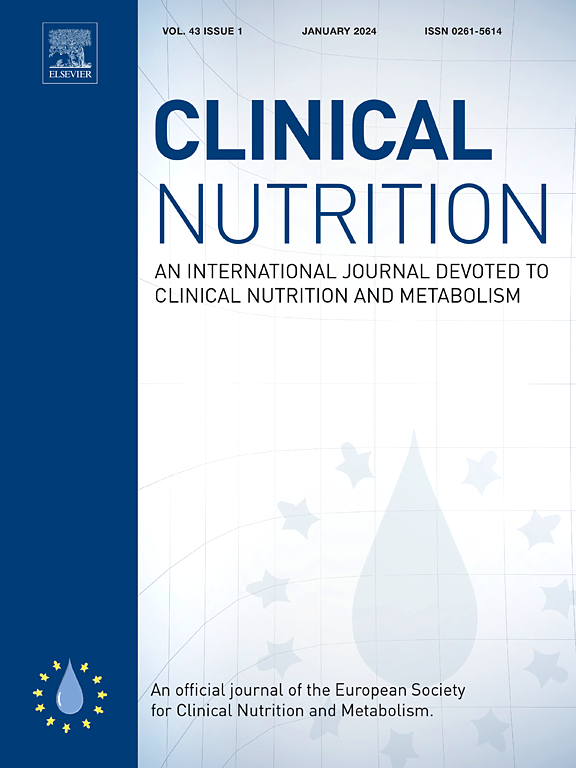Association between body composition parameters and treatment-related toxicities in patients with metastatic breast cancer receiving cyclin-dependent kinase 4 and 6 inhibitors
IF 6.6
2区 医学
Q1 NUTRITION & DIETETICS
引用次数: 0
Abstract
Background & aims
Nowadays, limited data or no data are available on body composition changes and the development of treatment-related toxicities in metastatic breast cancer (MBC) patients treated with innovative and promising anticancer therapies, including cyclin-dependent kinase 4 and 6 (CDK4/6) inhibitors. Therefore, we evaluated in MBC treated with CDK4/6 inhibitors changes in adiposity and muscularity before and after treatment and whether the changes in these parameters were associated with toxicities, dose reduction or treatment discontinuation.
Methods
We considered ER+/HER2- MBC patients undergoing treatment with CDK 4/6 inhibitors, collected clinical data and registered the number and type of toxicities, dose reduction due to adverse events and the rate of discontinuation. We analyzed CT scan images before treatment (T0) and at the first follow-up visit (T1), calculating SAT, VAT, TAT (adipose tissue), SMA and SMI (skeletal muscle mass).
Results
70 MBC patients were enrolled. Median time of observation at T1 was 4 months (3; 12); 68 (97 %) patients experienced at least one G1-G2 adverse event, whereas 37 (53 %) at least one G3-G4. Dose reduction due to toxicity was registered in 17 patients (24 %), whereas discontinuation in 24 (34 %) patients. SMA at baseline inversely correlated with the number of adverse events (G3-G4) (r = −0.30; p = 0.039). Changes in body composition were not associated with G3-G4 toxicities. However, in patients with dose reduction, we observed overtime (T0-T1) an increase in median VAT (118 vs 135; p = 0.023) (median Delta VATT0-T1 3.9 %). In patients not discontinuing the treatment, we observed overtime an increase in mean SMA (127 ± 23 vs 131 ± 22, p < 0.05) and median VAT (119 vs 131, p < 0.05). We observed greater reduction in median VAT (Δ%) in patients who discontinued the therapy (p < 0.05). ΔVAT (%) (reduction) was more pronounced in those patients who discontinued therapy for disease progression (p = 0.01).
Conclusion
Changes in muscularity and adiposity with not univocal direction were associated with toxicities, treatment discontinuation or dose reduction among patients with breast cancer treated with CDK4/6 inhibitors.
求助全文
约1分钟内获得全文
求助全文
来源期刊

Clinical nutrition
医学-营养学
CiteScore
14.10
自引率
6.30%
发文量
356
审稿时长
28 days
期刊介绍:
Clinical Nutrition, the official journal of ESPEN, The European Society for Clinical Nutrition and Metabolism, is an international journal providing essential scientific information on nutritional and metabolic care and the relationship between nutrition and disease both in the setting of basic science and clinical practice. Published bi-monthly, each issue combines original articles and reviews providing an invaluable reference for any specialist concerned with these fields.
 求助内容:
求助内容: 应助结果提醒方式:
应助结果提醒方式:


